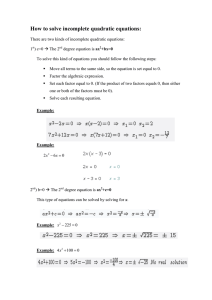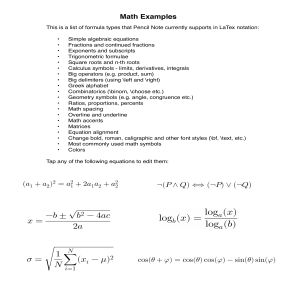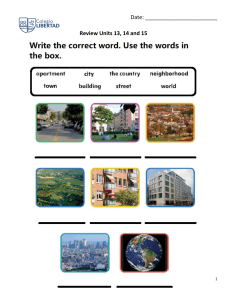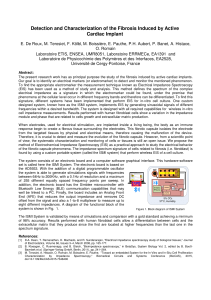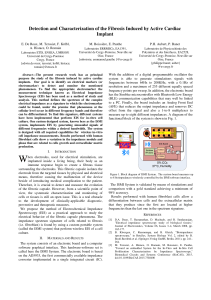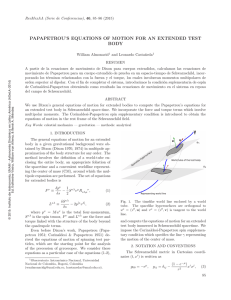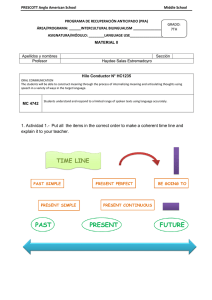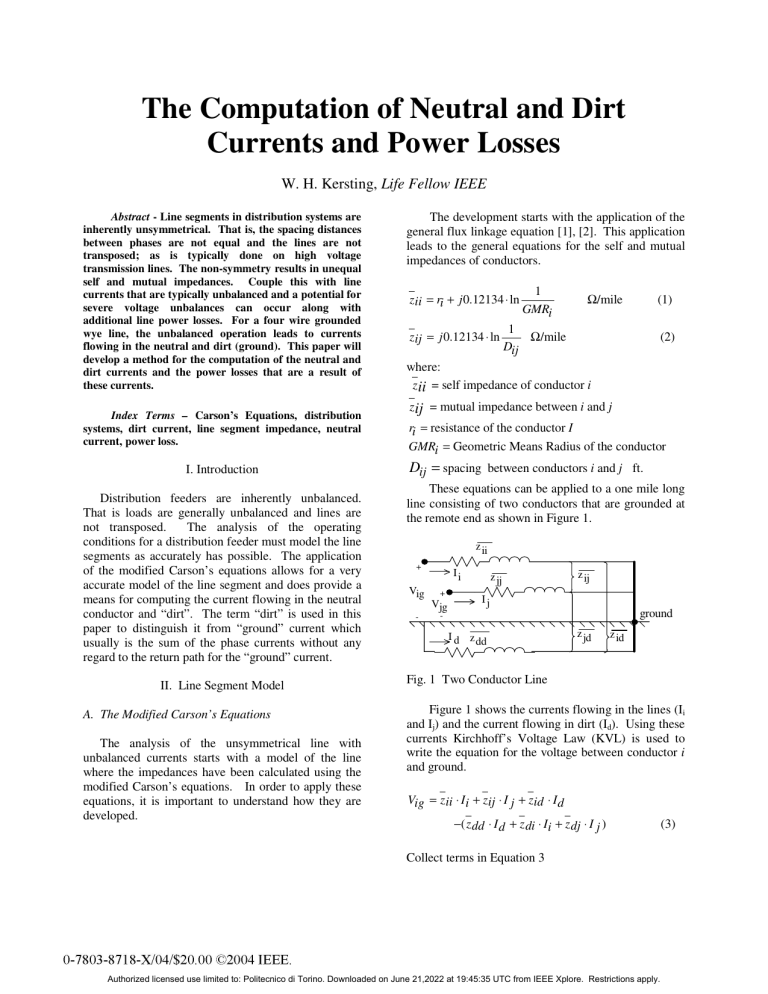
The Computation of Neutral and Dirt Currents and Power Losses W. H. Kersting, Life Fellow IEEE Abstract - Line segments in distribution systems are inherently unsymmetrical. That is, the spacing distances between phases are not equal and the lines are not transposed; as is typically done on high voltage transmission lines. The non-symmetry results in unequal self and mutual impedances. Couple this with line currents that are typically unbalanced and a potential for severe voltage unbalances can occur along with additional line power losses. For a four wire grounded wye line, the unbalanced operation leads to currents flowing in the neutral and dirt (ground). This paper will develop a method for the computation of the neutral and dirt currents and the power losses that are a result of these currents. Index Terms – Carson’s Equations, distribution systems, dirt current, line segment impedance, neutral current, power loss. I. Introduction Distribution feeders are inherently unbalanced. That is loads are generally unbalanced and lines are not transposed. The analysis of the operating conditions for a distribution feeder must model the line segments as accurately has possible. The application of the modified Carson’s equations allows for a very accurate model of the line segment and does provide a means for computing the current flowing in the neutral conductor and “dirt”. The term “dirt” is used in this paper to distinguish it from “ground” current which usually is the sum of the phase currents without any regard to the return path for the “ground” current. II. Line Segment Model A. The Modified Carson’s Equations The analysis of the unsymmetrical line with unbalanced currents starts with a model of the line where the impedances have been calculated using the modified Carson’s equations. In order to apply these equations, it is important to understand how they are developed. The development starts with the application of the general flux linkage equation [1], [2]. This application leads to the general equations for the self and mutual impedances of conductors. zii = ri + j 0.12134 ⋅ ln zij = j 0.12134 ⋅ ln 1 GMRi Ω/mile (1) 1 Ω/mile Dij (2) where: zii = self impedance of conductor i zij = mutual impedance between i and j ri = resistance of the conductor I GMRi = Geometric Means Radius of the conductor Dij = spacing between conductors i and j ft. These equations can be applied to a one mile long line consisting of two conductors that are grounded at the remote end as shown in Figure 1. z ii + Vig Ii + Vjg - z jj z ij Ij ground - I d z dd z jd z id Fig. 1 Two Conductor Line Figure 1 shows the currents flowing in the lines (Ii and Ij) and the current flowing in dirt (Id). Using these currents Kirchhoff’s Voltage Law (KVL) is used to write the equation for the voltage between conductor i and ground. Vig = z ii ⋅ Ii + zij ⋅ I j + zid ⋅ I d −( z dd ⋅ I d + z di ⋅ Ii + z dj ⋅ I j ) Collect terms in Equation 3 Authorized licensed use limited to: Politecnico di Torino. Downloaded on June 21,2022 at 19:45:35 UTC from IEEE Xplore. Restrictions apply. (3) ( ) ( ) Vig = z ii − z dn ⋅ Ii + z ij − z dj ⋅ I j ( ) $z + z id − z dd ⋅ I d (4) A key to understanding how the dirt current can be computed later is to understand how Kirchhoff’s Current Law (KCL) is now applied to this simple circuit. Apply KCL at the remote end of the lines where they are connected to ground. Ii + I j + I d = 0 (5) I d = − Ii − I j Note here that the current flowing in dirt must be equal to the negative sum of the actual line currents. Substitute Equations 1 and 2 into Equations 3 and 4 and collect terms: Vig = ( z ii + z dd − z di − zid ) ⋅ Ii +( zij + z dd − z dj − z id ) ⋅ I j (6) Equation 6 is of the general form: Vig = z$ ii ⋅ Ii + $zij ⋅ I j (7) ⎛ ji = rd + j 0.12134 ⎜ ln ⎜ ⎝ Ddj ⋅ Did 1 + ln D ji GMRd (8) Substitute Equations 1 and 2 into Equations 8 and after some algebra manipulations results in: ⎛ z$ ii = rd + ri + j 0.12134 ⋅ ⎜ ln ⎜ ⎝ Did ⋅ Ddj 1 + ln GMRi GMRd ⎞ ⎟ ⎟ ⎠ (9) $z ⎛ ij = rd + j 0.12134 ⎜ ln ⎜ ⎝ Ddj ⋅ Did 1 + ln Dij GMRd ⎞ ⎟ ⎟ ⎠ (10) A similar procedure is followed for conductor j which will lead to: V jg = z$ ji ⋅ Ii + z$ jj ⋅ I j (11) where: ⎛ z$ jj = rd + r j + j 0.12134 ⋅ ⎜ ln ⎜ ⎝ ⎛ $ ii = zii + z dd − z di − zid $z ij = zij + z dd − z dj − zid Did ⋅ Ddj 1 + ln GMR j GMRd ⎞ ⎟ ⎟ ⎠ (12) (13) Equations 9,10,12 and 13 are interesting in that they give a method for computing the self and mutual impedances of conductors taking into account the effect of the current flowing in dirt. Unfortunately these four equations require knowledge of the Geometric Mean Radius (GMR) of dirt and the distance from the conductors to dirt. This presents a problem since the GMR of dirt is not found in tables and the distance from a conductor to the path of the current flowing in dirt is unknown. Fortunately John Carson in 1926 wrote a classic paper [3] that helps define the unknowns in the equations. In his paper Carson postulates currents injected into conductors that are tied together and grounded at the end of the lines (Figure 1). Carson then develops two equations that will determine the self and mutual impedances of the conductors taking into account the dirt return path. His equations are quite long and difficult to evaluate. However, it is possible to develop what will be referred to as the “modified Carson’s Equations”. The development of the modified equations can be found in Reference [1]. The end result of the modified Carson’s equations is: where: $z ⎞ ⎟ ⎟ ⎠ zii = ri + 0.09530 + j 0.12134 ⎜ ln ⎝ $z ⎛ ij = 0.09530 + j 0.12134 ⎜ ln ⎜ ⎝ ⎞ 1 + 7.93402 ⎟ GMRi ⎠ (14) ⎞ 1 + 7.93402 ⎟ ⎟ Dij ⎠ (15) Note that Equations 14 and 15 are in exactly the same form as Equations 10 and 11. In fact, a comparison of the two sets of equations gives numerical values for the unknowns. Equation 14 gives the self impedance of the phase conductor and Equation 15 gives the mutual impedance between conductors i and j. In these two equations the equivalent resistance of dirt is shown to be 0.0953 ohms/mile and the equivalent mutual inductive reactance between a conductor and dirt is given by the 7.93402 term in the two equations. Recall that the first step in the development of these equations was to recognize that the dirt current has to be the negative sum of the conductor currents (Equation 5). With all of the terms for the computation of self and mutual impedance known, a new equivalent circuit of the line segment can be developed. Removing the short circuit to ground in Figure 1 and applying Authorized licensed use limited to: Politecnico di Torino. Downloaded on June 21,2022 at 19:45:35 UTC from IEEE Xplore. Restrictions apply. Equations 7 and 11 results in the equivalent “primitive” circuit of Figure 2. z ii + Ii Vig z jj + Ij Vjg - - + z ij + V'ig - - V'jg ground It is important to understand that the impedance of dirt has now been “folded” into the values of the “primitive” impedances in Figure 2 and that the negative sum of the conductor currents will be equal to the current flowing in dirt as shown in Figure 1. B. Phase Impedance Matrix for Overhead Lines A four wire grounded wye three-phase line is shown in figure 3. zaa + Ia + Ib Vbg + Ic z nn Vcg + - - V'ag V'bg + z cn V'cg V'ng - - - = ⎡V ⎢ ⎢V ⎢ ⎢V ⎢ V ⎣ ⎡ z$ aa ⎢ ⎢ z$ ba ⎥+⎢ $ ⎥ ⎢ z ca ⎥ ⎢$ ⎦ ⎢ ⎣ z na z$ ab z$ ac z$ an ⎤ $z bb $z bc z$ bn ⎥ 'cg 'ng z$ cb z$ cc z$ nc ⎡Ia ⎤ ⎢ ⎥ I ⎢ b⎥ ⋅ ⎥ $z ⎢I ⎥ cn ⎥ ⎢ c ⎥ ⎥ I z$ nn ⎥⎦ ⎣ n ⎦ ⎥ (16) Partition between the third and fourth rows and columns. In partitioned form Equation 16 becomes: [ ] ⎡ Vabc ⎤ ⎢ ⎥ ⎢ ⎡Vng ⎤ ⎥ ⎦⎦ ⎣⎣ [V 'abc ]⎤ ⎡ =⎢ ⎢ ⎡V ⎣⎣ ⎡ ⎡ $z ⎤ ⎣ ij ⎦ ⎥+⎢ 'ng ⎤⎦ ⎥ ⎢ ⎡ $z nj ⎤ ⎦ ⎢⎣ ⎣ ⎦ −1 ⋅ ⎡ $z nj ⎤ ⋅ [ I abc ] ⎣ (20) ⎦ Before going on note that when the line currents are known, then the current flowing in the neutral conductor can be determined using Equation 20. Because of this, the “neutral current transformation vector” is defined as: [ znt ] = − ⎡⎣ z$ nn ⎤⎦ −1 ⋅ ⎡ $z nj ⎤ ⎣ (21) ⎦ (22) The primitive impedance matrix can be reduced to the phase impedance matrix by first substituting Equation 20 into Equation. 18: 'ag ⎤ ⎥ 'bg ⎥ z$ nb [ I n ] = − ⎡⎣ z$ nn ⎤⎦ - In Figure 3 all of the self and mutual impedances can be calculated using the modified Carson’s equations (Eqs. 14 and 15). The general voltage equations in matrix form for this line are determined by applying KVL and results in: ⎤ ⎥ ⎥ ⎥ ⎥ ⎥ ⎦ (19) I n = ⎣⎡ znt ⎦⎤ ⋅ ⎣⎡ I abc ⎦⎤ + Fig. 3 Grounded Wye Three-Phase Line ⎡Vag ⎢ ⎢Vbg ⎢ ⎢Vcg ⎢ V ⎣ ng [0] = [0] + ⎡⎣ $z nj ⎤⎦ ⋅ [ I abc ] + ⎡⎣ z$ nn ⎤⎦ ⋅ [ I n ] When the phase currents have been computed, the current flowing in the neutral (in the same direction as the phase currents) is given by: + zbn z an In Vng - - zbc z cc (18) + z ab z ac z bb [Vabc ] = [V 'abc ] + ⎡⎣ z$ ij ⎤⎦ ⋅ [ I abc ] + ⎡⎣ $zin ⎤⎦ ⋅ [ I n ] Solve Equation 19 for [In]: Fig. 2 Equivalent Primitive Circuit Vag Because the neutral is grounded the voltages Vng and V’ng are equal to zero. Substituting those values into Equation 17 and expanding results in: [Vabc ] = [V 'abc ] ⎛ + ⎜ ⎡ $z abc ⎤ − ⎡ $z in ⎤ ⋅ ⎡ z$ nn ⎤ ⎝ ⎣ ⎦ ⎣ ⎦ ⎣ ⎦ −1 ⎞ ⋅ ⎡ $z nj ⎤ ⎟ ⋅ [ I abc ] ⎣ ⎦ ⎠ (23) (24) [Vabc ] = [V 'abc ] + [ zabc ] ⋅ [ I abc ] where: ⎡⎣ zabc ⎤⎦ = ⎡ $zij ⎤ − ⎡ $zin ⎤ ⋅ ⎡ $z nn ⎤ ⎣ ⎦ ⎣ ⎦ ⎣ ⎦ −1 ⋅ ⎡ $z nj ⎤ (25) ⎣ ⎦ This process of eliminating the row and column of the primitive impedance matrix is known as the “Kron Reduction [4] and results in Figure 4. ⎡ $z in ⎤ ⎤ ⎣ ⎦⎥ ⎡ ⋅⎢ $ ⎡ z nn ⎤ ⎥ ⎣ ⎣ ⎦ ⎥⎦ [ I abc ]⎤ [ I n ] ⎥⎦ (17) Authorized licensed use limited to: Politecnico di Torino. Downloaded on June 21,2022 at 19:45:35 UTC from IEEE Xplore. Restrictions apply. 5. Node n Ia Zaa Ib Zbb Zab Zca Ic Zcc Zbc + Vag n + Vbg - - Fig. 4 n + Vcgn Node m + Vagm + Vbg m + Vcg - m - - = n ⎡V ag ⎤ ⎢ ⎥ ⎢Vbg ⎥ ⎢ ⎥ Vcg ⎥ ⎢ ⎣ ⎦ m ⎡ Z aa ⎢ + ⎢ Zba ⎢ Z ca ⎣ Z ab Zbb Z cb Z ac ⎤ ⎡ I a ⎤ ⎥ ⎢ ⎥ Zbc ⎥ ⋅ ⎢ Ib ⎥ Zcc ⎥⎦ ⎢⎣ Ic ⎥⎦ (27) - The real power loss of a line segment that has been represented by the phase impedance matrix must be computed for each phase as: Equivalent Three-Phase Line ⎤ ⎥ ⎥ ⎥ ⎥ ⎦ I d = − ( I a + Ib + Ic + I n ) D. Computation of Power Loss Writing KVL for the circuit of Figure 4 gives: ⎡V ag ⎢ ⎢Vbg ⎢ V ⎢ ⎣ cg The current flowing in ground is computing by: Plossa,b,c = Pina,b, c − Pouta,b, c (26) where: Zij = zij ⋅ length The impedance matrix of Equation 26 is defined as the “phase impedance matrix”. The process of developing the phase impedance matrix for the four wire grounded wye line can be extended to both twophase and single-phase lines. In the two phase line applying the modified Carson’s equations will result in a 3x3 matrix. The Kron reduction will reduce this to a 2x2 matrix. The phase impedance matrix will still be a 3x3 matrix with the row and column corresponding to the missing phase set to zero and the elements of the Kron reduced matrix filling in the remaining elements. For a single-phase line modified Carson’s equations gives a 2x2 matrix and Kron reduction reduces this to a single element. The phase impedance matrix then has the rows and columns of the missing phases set to zero and the single element will be the diagonal term of the phase present. C. Computation of neutral and dirt current calculations The steps to take in computing the neutral and dirt currents are as follows: 1. Compute the “primitive impedance” matrix using the modified Carson’s equations 2. Kron reduce the “primitive impedance” matrix down to the “phase impedance matrix”. In this process define the “neutral current transformation matrix” of Equation 21. 3. For a given load condition determine the phase currents flowing in the line. This will usually require a three-phase power flow program 4. With the line currents known, apply Equation 22 to compute the neutral current (28) It is not unusual to have one of the phase power losses to be negative in a line carrying unbalanced currents. Typically the lightly loaded phase will display a negative power loss. Even with what appears to be a problem, the total three-phase power loss is correctly computed as the sum of the three individual phase power losses even if one of them is negative. The total three-phase power loss of the line is then given by: Plosstotal = Plossa + Plossb + Plossc (29) By computing the power losses in this way, the effect of neutral and dirt power losses are included. However, it is critical that it is understood that the power loss per phase can not be computed as the phase resistance times the current squared. That process will give only the power loss in the phase conductors and will ignore the power loss in the neutral and dirt. In order to determine the power losses in the neutral and dirt, the neutral and dirt currents must be computed. When that is done the appropriate power losses are computed as: Plossneutral = Rneutral ⋅ I n 2 Plossdirt = 0.0953 ⋅ length ⋅ I d 2 (30) When this has been done, now the power losses in the individual phases can be computed by: Pxlossa = Ra ⋅ I a 2 Pxlossb = Rb ⋅ Ib 2 Pxlossc = Rc ⋅ Ic 2 (31) The total three phase power loss using this approach is given by: Authorized licensed use limited to: Politecnico di Torino. Downloaded on June 21,2022 at 19:45:35 UTC from IEEE Xplore. Restrictions apply. Plosstotal = Plossa + Plossb + Plossc + Plossn + Plossd (32) The total power loss computed by Equation 32 will be exactly the same as that given by Equations 28 and 29. III. Example Consider a three-phase overhead distribution line to be constructed as shown in Figure 5. 2.5' a Assume that the line is three-miles long and operating at 12.47 kV and serves an unbalanced threephase grounded wye connected load of: Phase-a = 1500 kVA at 0.88 lagging power factor Phase-b = 1000 kVA at 0.95 lagging power factor Phase-c = 2000 kVA at 0.8 lagging power factor In order to avoid an iterative solution, the loads are treated as constant impedance computed assuming nominal voltage. The load impedance matrix becomes: 4.5' c b ⎡⎣ Z 3.0' load ⎤⎦ 0 ⎡30.409 + j16.413 ⎢ 0 49.242 + j16.185 =⎢ ⎢ ⎣ 0 0 0 0 20.733 + ⎤ ⎥ ⎥ j15.550 ⎦⎥ 4.0' Kirchhoff’s voltage law for the circuit is: ⎡⎣VLGabc ⎤⎦ source n = ( ⎡⎣ Z abc ⎤⎦ + ⎡⎣ Zload ⎤⎦ ) ⋅ ⎡⎣ Iabc ⎤⎦ 25.0' where: ⎣⎡VLN abc ⎦⎤ source = ⎡ 7199.6/ 0 ⎤ ⎢ 7199.6/ − 120 ⎥⎥ ⎢ ⎢⎣ 7199.6/120 ⎥⎦ V Solving for the line currents gives: Fig. 5 Three-Phase Distribution Line Conductor Spacings For this line the phase conductors are 556,550 26/7 ACSR and the neutral conductor is 4/0 ACSR. Applying the modified Carson’s equations to this line results in the following “primitive” impedance matrix in ohms/mile: ⎡.2812 + ⎢ .0953 + ⎢ ⎣⎡ zp ⎤⎦ = ⎢ .0953 + ⎢ ⎣⎢.0953 + j1.383 .0953 + j.7266 .0953 + j.8515 .0953 + j.7524 ⎤ ⎥ j.7266 .2812 + j1.383 .0953 + j.7802 .0953 + j.7674 ⎥ j.8515 .0953 + j.7802 .2812 + j1.383 .0953 + j.7865 ⎥ ⎥ j.7524 .0953 + j.7674 .0953 + j.7865 .6873 + j1.546 ⎦⎥ Partitioning this matrix between the third and fourth rows gives the “neutral current transformation vector” of Equation 21 as: ⎡⎣ I abc ⎤⎦ = ⎡ 202.84/ − 32.0 ⎤ ⎢ 137.94/ − 139.1⎥⎥ ⎢ ⎢⎣ 255.95/ 81.7 ⎥⎦ A The current flowing in the neutral conductor is given by (Equation 21): I n = ⎣⎡ znt ⎦⎤ ⋅ ⎣⎡ I abc ⎦⎤ = 54.62/ − 131.0 A The current flowing in “dirt” is computed to be: I d = − ( I a + Ib + Ic + I n ) = 70.3/ − 168.3 A The line-to-ground voltages at the load are computed to be: znt = ⎡⎣ −.4292 − j.1291 −.4373 − j.1327 −.4476 − j.1373⎤⎦ Performing the Kron reduction gives the phase impedance matrix as: ⎡⎣ z abc ⎤⎦ ⎡.3375 + j1.0478 .1535 + j.3849 ⎢ = ⎢ .1535 + j.3849 .3414 + j1.0348 ⎢ .1559 + ⎣ j.5017 .1580 + j.4236 .1559 + j.5017 ⎤ ⎥ .1580 + j.4236 ⎥ ⎡⎣VLGabc ⎤⎦ load = ⎡ 7009.3/ 3.6 ⎤ ⎢ 7150.1/ − 120.9 ⎥⎥ ⎢ ⎣⎢ 6633.3/118.6 ⎦⎥ V The input complex power for the line is: .3465 + j1.0179 ⎥⎦ Authorized licensed use limited to: Politecnico di Torino. Downloaded on June 21,2022 at 19:45:35 UTC from IEEE Xplore. Restrictions apply. ⎡ ⎣ Sin ⎤ ⎦ = ⎡ 1238.6 + j 773.7 ⎤ ⎢ 938.5 + j 325.0 ⎥⎥ ⎢ ⎢⎣1446.1 + j1142.0⎥⎦ The total three-phase real power loss can be computed as the sum of the five losses shown above: kW + jkvar Pxlosstotal = 22.9460 + 10.6122 + 36.5342 The load complex powers are: ⎡ 1251.1 + j 675.3 ⎤ ⎢ = 937.0 + j 308.0 ⎥⎥ S ⎡ out ⎦ ⎤ ⎣ ⎢ ⎢⎣1358.2 + +5.2981 + 1.4137 = 76.8041 kW + jkvar j1018.7 ⎥⎦ The real power loss is computed as: ⎡ ⎣ Ploss ⎤ ⎦ = Re ⎡⎣ Sin ⎤⎦ − Re ⎡⎣ Sout ⎤⎦ = ⎡ −12.5654 ⎤ ⎢ 1.4666 ⎥⎥ ⎢ ⎢⎣ 87.9030 ⎥⎦ kW Computing real power loss this way would seem to give some wrong answers. However, remember that power loss by definition is input power minus output power. The negative power loss in phase a is a result of including the effects of the neutral and ground resistances and currents in the three-phase model of Figure 4. Although the individual phase power losses must be taken with a grain of salt, the correct total threephase real power loss is the sum of the phase real power losses: The total three-phase real power loss is computed to be exactly the same using the first method of power in minus power out. If only the total three-phase loss is desired, the direct method is the first method. Using method one sometimes will result in a negative power loss on one phase, but that is OK since this model has incorporated into the phase loss the effects of the neutral and dirt losses. If there is interest in the losses in the neutral and dirt, then the second method must be used. IV. Conclusions This paper has developed and demonstrated how the neutral and “dirt” currents and associated real power losses can be computed. The only “trick” is that the impedances of the line must be computed using the modified Carson'’ equations followed by the Kron reduction. V. References Plosstotal = Plossa + Plossb + Plossc = 76.8041 kW 1. Another way of computing the total three-phase power loss is to compute the real power losses using I 2 ⋅ R for each phase conductor, neutral conductor and 2. 3. “dirt”. Pxlossa = I a 2 ⋅ Ra = 202.842 ⋅ 0.5577 = 22.9460 Pxlossb = Ib 2 ⋅ Rb = 127.942 ⋅ 05577 = 10.6122 Pxlossc = Ic 2 ⋅ Rc = 255.952 ⋅ 0.5577 = 36.5342 kW Pxlossn = I n 2 ⋅ Rn = 54.622 ⋅1.7766 = 5.2981 Pxlossd = I d 2 ⋅ Rd = 70.32 ⋅ 3 ⋅ .0953 = 1.3137 kW 4. Kersting, W.H., Distribution System Modeling and Analysis, CRC Press, Boca Raton, Florida, 2002. Glover, J.D. and Sarma M., Power System Analysis and Design, 2nd edition, PWS-Kent Publishing, Boston, 1994. Carson, John R., “Wave propagation in overhead wires with ground return”, Bell System Technical Journal, Vol. 5, New York, 1926. Kron, G., “Tensorial analysis of integrated transmission systems”, Part 1, the six basic reference frames, AIEE Trans., Vol 71, 1952. W. H. Kersting (SM’64, F’89) was born in Santa Fe, NM. He received the BSEE degree from New Mexico State University, Las Cruces, and the MSEE degree from Illinois Institute of Technology. He joined the faculty at New Mexico State University in 1962 and served as Professor of Electrical Engineering and Director of the Electric Utility Management Program until his retirement in 2002. He is currently a consultant for Milsoft Utility Solutions. He is also a partner in WH Power Consultants. Note that now all phases have positive power losses, which makes more sense. The phase power losses are quite a bit different from those computed previously. Note also that the power losses in the neutral conductor and “dirt” have indeed been computed. Authorized licensed use limited to: Politecnico di Torino. Downloaded on June 21,2022 at 19:45:35 UTC from IEEE Xplore. Restrictions apply.
